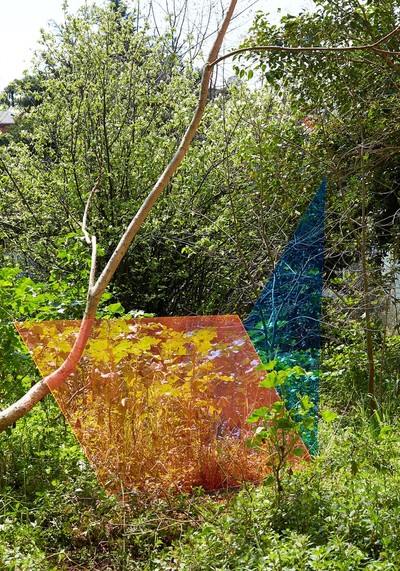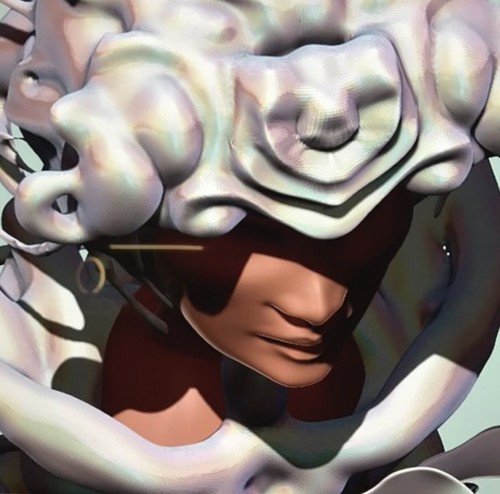Moving from French philosopher Jacques Derrida's concept of hauntology, Red Bull Art Around Arnavutköy brings the works of 14 artists together around the theme of ghosts between May 4 and May 20 in Istanbul's Arnavutköy quarter. The exhibition connects a never-ending nostalgia toward the past with an unrealized imaginary of the future. With reference to dreams that had once been dreamed of and later became detached in some way from our collective memory, the exhibition raises the question: "How many different ghosts do we hold inside?"
In terms of time and place, the neighborhood of Arnavutköy is at the center of "ghosts" and the exhibition moves on a trajectory following this neighborhood's past, destruction, annihilation, rebirth and hidden parts. Can Büyükberber contributes to the exhibition with an interactive augmented reality work that is installed in the pub named Any, located in one of the oldest manor houses of Arnavutköy. While taking part in the work, the audience finds themselves identifying with an anonymous identity of the future. This identity might be conceived as an otherworldly being, a ghost of the past or a representation of the consciousness that has left the body. Canavar's mural painting is placed on the facade of a building in one of the backstreets of Arnavutköy. This mural, which is the opening gate of the exhibition to the underground, makes a reference to the past, with a focus on insects as both nourishing and consuming parts of the ecosystem.

Bahar Yürükoğlu, "Neoscapes."
Bahar Yürükoğlu's installation, that she produced with colorful plexiglass for a hidden garden in the backstreets of the neighborhood, binds together the end points of the natural and the superficial. The installation conceptualizes a space for the future and thus questions the binaries, such as existence and absence, past and future, and nature and civilization. Constructing an alternative imaginary for the future through links to biology, ecology and art, Pınar Yoldaş' sculptures are reminiscent of a queer imaginary of the future, thanks to their cyborg-like structures. Communicating with the audience from inside a fisherman's aquarium, these sculptures also propose a distinctive ecosystem.
Ali Emir Tapan's audience-centered performance in a desolate warehouse chases up those ghosts that we create on the virtual space. He questions the contemporary notion of "surveillance" by putting the viewer into the position of the "viewed." Guido Casaretto's sculpture, resembling a meteor that hit the earth, both challenges for the audience's optical and physical perception, and is also interpretive for the rupture in Arnavutköy's demographic structure.
Ilgın Seymen's installation recalls a chemical reaction, taking place on a fishing boat on the coast. Underlining the toxic features of the plastic materials that we use in daily life, this work brings up the issues of sea pollution in Arnavutköy and the problematic way that "Kazıklı Yol," the road built on the sea, relates to the environment.

Pınar Yoldaş, "Designer Babies."
Uğur Engin Deniz's video transforms a view of the neighborhood - a view that once existed but that we only see the traces of today - into abstract and geometrical images, cross-layering the ever-changing architecture of the neighborhood on a trans-historical level.
Sabo's paintings and drawings narrate a fictive story by transforming the house it is located in. A scientist who lived in Arnavutköy and a virus that contaminated the residents of the neighborhood are the main characters of this story.
Begüm Yamanlar's video, resembling the layered texture of the neighborhood, confronts us in one of the backstreets, located inside an arched structure that survived the centuries.
Eda Aslan's installation, showcasing the sculpture molds that are not used anymore, stands like a monument dedicated to the former residents of the neighborhood. Each of these amorphous objects enlivens an individual work, reminding of the shell of a being which has long lost its essence.
Pınar Marul's installation emerges at the outer surface of a manor house from 1898 that was used to be a dress-making atelier in the service of the palace. With its mystical appearance and delicate form, the work carries the undesirable and the invasive power at its core.
Ceylan Göksel's sound installation of anonymous drone sounds, dispersing out from an unknown source, absorbs the soundscape of the neighborhood and creates a dystopian construction. The photograph selected as a result of an open call that addressed the students meets with visitors in the front of the walls surrounding the church that is located at the heart of Arnavutköy.
In parallel with the works that 14 artists created for the specific spots of the neighborhood, conversation meetings with the artists and curators, night tours and "spooky" video screenings are organized as parts of the exhibition program this year on May 10, May 17 and May 20.